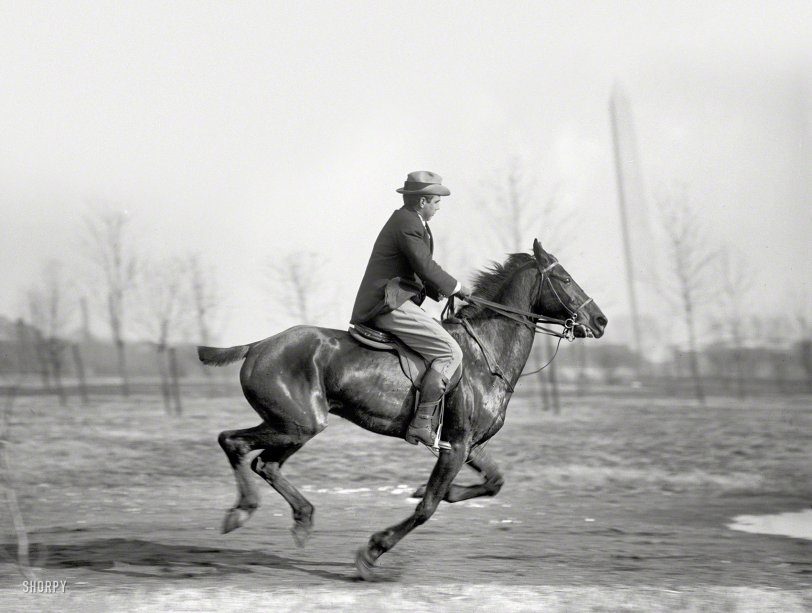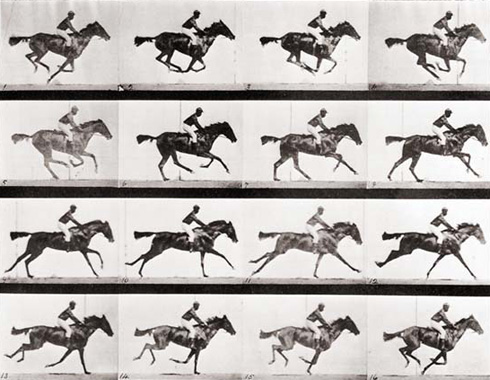


Framed or unframed, desk size to sofa size, printed by us in Arizona and Alabama since 2007. Explore now.
Shorpy is funded by you. Patreon contributors get an ad-free experience.
Learn more.

- Baldwin 62303
- Baldwin VO-1000
- Cold
- No expense spared
- Tough Guys
- Lost in Toyland
- And without gloves
- If I were a blindfolded time traveler
- Smoke Consumer Also Cooks
- Oh that stove!
- Possibly still there?
- What?!?
- $100 Reward
- Freeze Frame
- Texas Flyer wanted
- Just a Year Too Soon
- WWII -- Replacing men with women at the railroad crossing.
- Yes, Icing
- You kids drive me nuts!
- NOT An Easy Job
- I wonder
- Just add window boxes
- Icing Platform?
- Indiana Harbor Belt abides
- Freezing haze
- Corrections (for those who care)
- C&NW at Nelson
- Fallen Flags
- A dangerous job made worse
- Water Stop
Print Emporium
A Fast Horse: 1914

Washington, D.C., 1914. "Wrisley Brown, attorney, riding." You'll note the Washington Monument showing a decided tilt to the left, although the reason is more optical than political. Harris & Ewing glass negative. View full size.
Amazing Timing!
Obviously, in 1914, stop-action photography was a long way off; yet somehow, the photographer managed to get this shot of the horse with all four of his hooves off the ground at the same time.
[Eadweard Muybridge first accomplished this 36 years earlier in 1878. -tterrace]
Thank You! tterrace - I stand corrected. The old adage about learning something new every day just hit me in the head like a V8 commercial.

Focal Plane Shutter distortion
It appears that the photographer was panning the camera to follow the horse and rider and the focal plane shutter effect caused the trees and monument to appear to be leaning.
Edit:
Examining the image further I think I see some additional focal plane distortion in addition to the monument and trees...
It appears to me that the horse looks like it not as long as a regular horse and the rider appears to be too big for the horse. Maybe it is just my eyes playing optical tricks on me.
Vertically Moving Focal Plane Shutter
The photographer panned the camera.
This is a single curtain focal plane shutter which uses a long black cloth with horizontal slits of different width pre-cut. It runs vertically close to the negative between two sets of rollers. It is spring driven and winding up the spring motor also rolls the shutter curtain back to the feed roller.
When the shutter is released the slit travels in front of the film. The faster the "shutter speed", the narrower the selected slit is because the shutter curtain travels at the same speed (inches per second or some other measurement) for a range of shutter speeds so that "shutter speed" ends up being the amount of time any given part of the negative is exposed to light. If I have this right, the slit was traveling top-to-bottom relative to the photographer. The negative image is being projected upside down inside the camera so it is "seeing" the light start at the bottom of the image and moving up.
In the old racing car photos you might see slanted oval tires (camera relatively motionless) or slanted posts and poles in the background (camera panning).
























On Shorpy:
Today’s Top 5